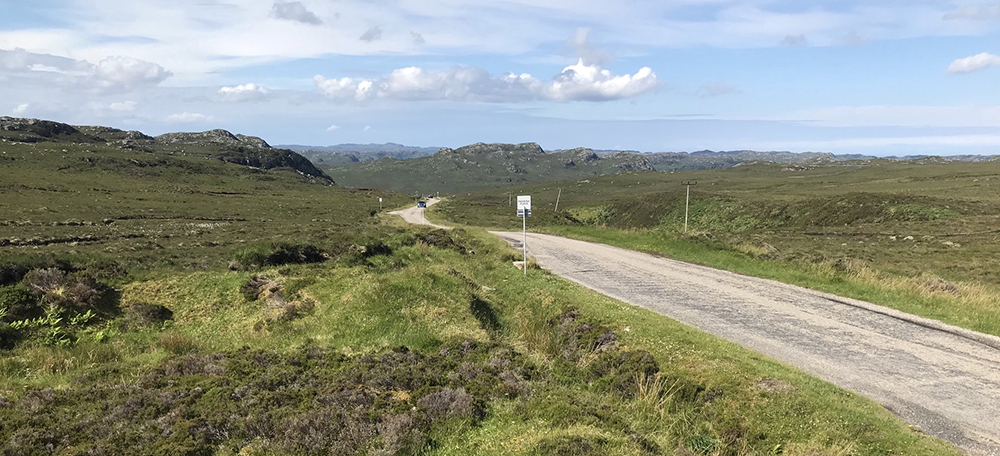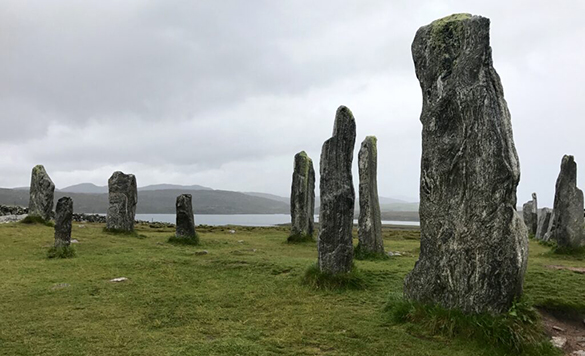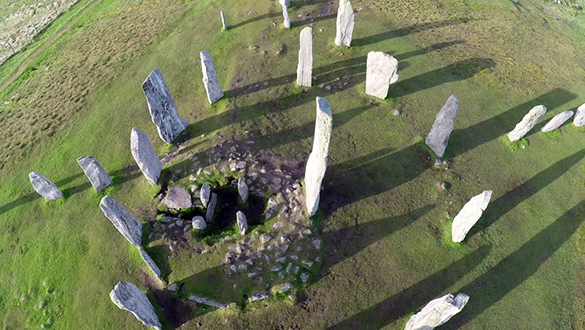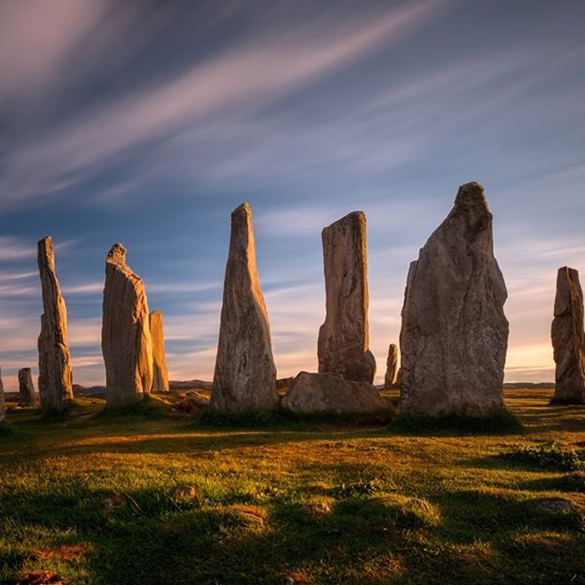This is a guest post by Boffy Burgoon, Art Correspondent for the Bulletin of Particle Physics.

I’m on the road to Durness, Northern Scotland. Single-lane with passing places. It winds its way through some of the most majestic landscapes that Great Britain has to offer. The many motoring enthusiasts, caravanners, campervanners, hikers, bikers and cyclists who toil their way along this part of the North Coast 500 are rewarded with magnificent views of long-ago-glacier-smoothed hills, hanging valleys, gushing peat-stained rivers, lochs of an unfathomable gun-metal hue, red deer and even eagles. This is country that fills my soul.

If you decide to brave the euro-touro logjam of the NC500 you may wish for a distraction albeit a distraction that is altogether startling in such an environment. Turn off the Durness Road (the A 838) at Rhichonich onto the B 801 towards Kinlochbervie. After about three kilometres, you will be confronted by Rusty McCrushem’s latest car mash installation. It is his most challenging to date. Unlike his earlier piles of rusted and discarded automobiles scattered over Scotland, this has a brilliantly thought through temporal element and takes car mashing to new heights.
At first pass, I see only cars that are more or less in tact. Rusty teases us with the odd patch of rust, flaking paint, delicately shattered windscreens, a dented door here and a missing wheel there. These once shining objects of commerce and pride are of no further vehicular use; they are now abandoned. However, they seem somehow at ease in their weed-ridden, road-side rest home for cars. Rusty broadcasts a message for the as yet unimpressed viewer: “Och, you’ve nae seen anything yet!”

And then I notice the forces of destruction that Rusty commands. This gives the whole a kind of lambs-to-slaughter feel. Is this a sly McCrushem nod to the one-way street of universal decay?

Rusty’s innate talent for mashing cars pummels the senses. The results are spectacular. I feel I have come across a scene of extraordinary violence but the screams of twisted automotive pain are stilled now. Only the curlew calls.

It’s difficult to imagine how this obliteration was achieved. I stand jaw-dropped in fascination. It is at once shocking and thrilling. The juxtaposition of highland scenery and motorway pile-up is difficult to accommodate. Russian dissidents come to mind. A thoughtful and thought provoking addition is a rusting cement mixer. Is this another of Rusty’s wink to the laws of physics? The great mix? Eternal spinning of countless galactic particles?

Whatever one thinks of Rusty’s work, his genius for mashing large metal objects is awe-inspiring. I imagine him manipulating some great mechanical maw that chews up whole cars and spits them out on the roadside. He is shouting “This is art! This is art!” Is it? Well, how else can he justify what he’s doing? Whatever, with this particular roadside wreckage, he has assured the enduring enigma of his oeuvre.
Of an evening, as the northern sun settles, I am sure Rusty feels satisfied with his day’s work. I see his smug smile as he pours himself two fingers of his favourite tipple. Surely, the same two fingers that he waves at anyone – resident, tourist or environmentalist – bold enough to comment. Whatever emotions provoked by Rusty’s work, this whole gig just makes me angry. So there!






